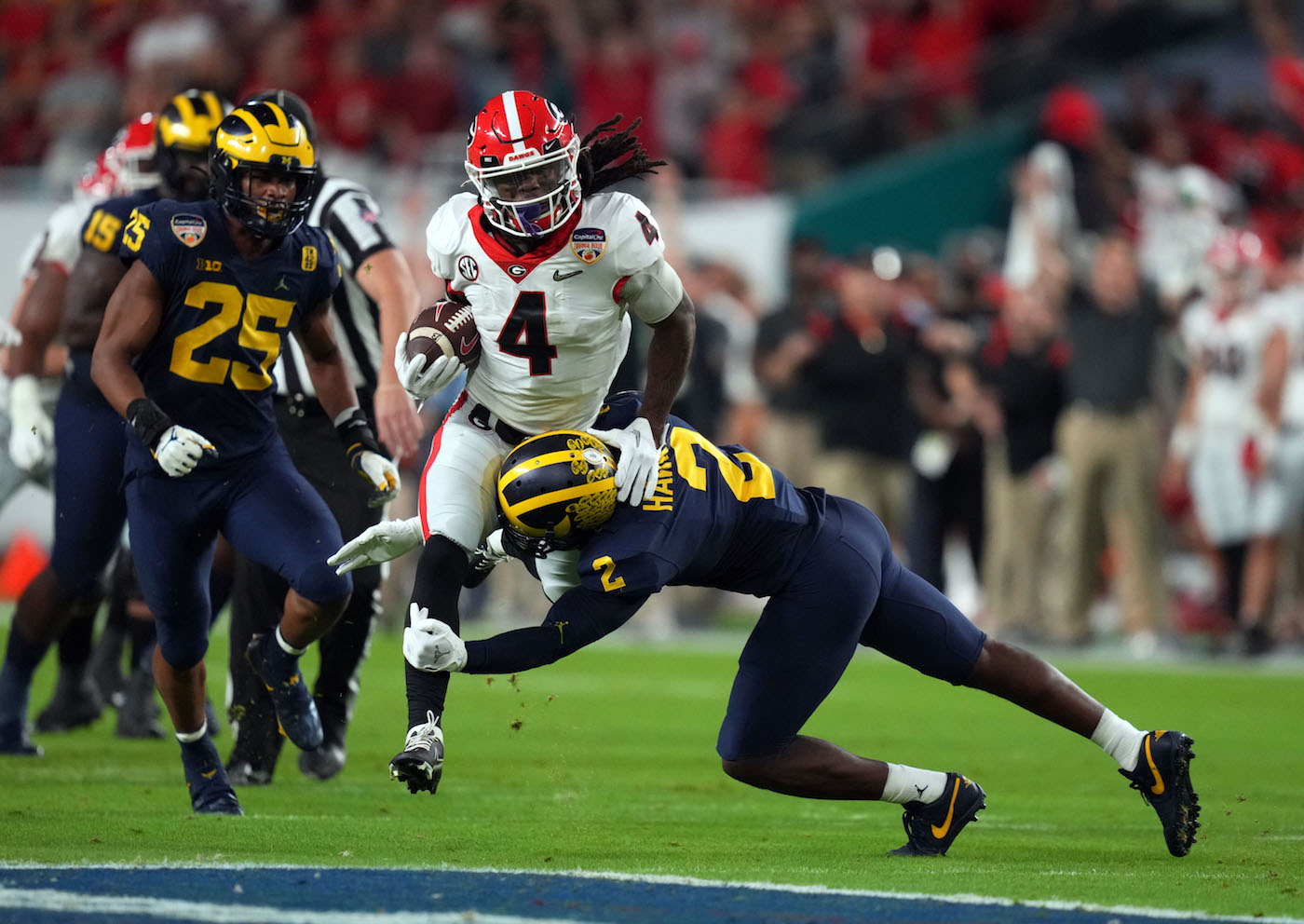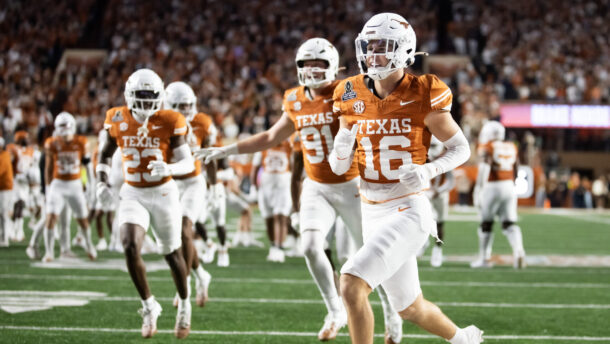
Hayes: Why an SEC vs. Big Ten Challenge would be ratings gold — and perfect way to open the 2024 season
By Matt Hayes
Published:
They agreed to this game 2 years ago, then a rare meeting between Pac-12 and SEC powers in a brand new NFL stadium.
The dynamics have quickly changed.
Now LSU and USC will kick off the 2024 season in the Las Vegas Kickoff Classic with much more on the line — and as a test run for something that could grow into much more.
How much more? Dream big, everyone.
Annual SEC vs. Big Ten season-openers — all over the 2 super-conferences.
“A broadcast bonanza,” a television industry source said. “It would reinvent and rebrand how college football kicks off the season.”
And how college football rolls into a new stage of growth.
The college football world changes in 2024 with the unveiling of the new and improved 16-team SEC and Big Ten, and the Playoff expanding to 12 teams. That translates to 9 conference games for each league, and what should annually be at least a combined 6 teams from the conferences in the Playoff.
If this year’s Playoff consisted of 12 teams, 7 from the Big Ten (4) and SEC (3) 2024 super-conference lineup would’ve made the Playoff.
That leaves only 1 untouched broadcast window remaining: the season-opener.
Instead of a steady diet of Louisiana-Monroe, Chattanooga, Youngstown State and Bowling Green, these gems could highlight the beginning of every season:
- Ohio State vs. Alabama
- Florida vs. Penn State
- Michigan vs. Texas
- Georgia vs. USC
- UCLA vs. LSU
- Oklahoma vs. Nebraska
- Michigan State vs. Tennessee
A football version of the men’s basketball midseason conference vs. conference challenge would be unlike anything seen in the world of the rarely unique nonconference game.
The intensity of Week 1 nonconference games in 2022 — LSU-FSU, Utah-Florida, Ohio State-Notre Dame — stole the show.
A Big Ten vs. SEC Challenge could produce as many as 8 games with 4 million viewers — the games television craves, and games that drive media rights deals — in 1 weekend. Start the games Thursday of Week 1, and play all the way through Monday night.
The intensity and anticipation for these SEC vs. Big Ten games — unlike bowl games where players opt out, and buy-in for each team has waned — would be pegged for months.
The 2 super-conferences would dominate the opening week like nothing has in the history of the sport.
Now, the obvious question: How does it happen?
How do you get 2 super-conferences who are clearly rivals for media rights dollars and player procurement (high school recruiting, and transfer portal) to find common ground in an effort the expand the game and reward fans — while adding 1 more significant game to the schedule?
It starts with money. The Big Ten media rights deal already is set, and the SEC is negotiating with ESPN to restructure its deal with the addition of Oklahoma and Texas.
Both media rights deals begin — you guessed it — in 2024. Could an SEC vs. Big Ten Challenge be enough to reopen both deals, and earn both conferences even more media rights cash?
I’m not going to dig down into the specifics of getting out of existing nonconference games, the number of home games each team needs, etc., because none of it matters if the money is right.
I don’t want to hear that it “can’t happen” because getting university presidents from each conference to agree on anything — much less something that includes cooperation with another conference in the 1 sport that rules athletic budgets — is nearly impossible.
Those same presidents figured out a way to play through a pandemic. Shelve the egos, and make it happen.
The Big Ten will be begin a new era next month when Kevin Warren steps down as commissioner, and moves to his new job with the NFL’s Chicago Bears. There’s an opportunity for the next commissioner to build a solid and trustworthy relationship with SEC commissioner Greg Sankey.
There’s an opportunity for the 2 super-conferences to work together and find common ground — because the future of college sports revolves around their ability to do so. Pay for play is on the horizon, NIL is an unwieldy mess, and expansion has clearly placed the Big Ten and SEC at the tip of the spear for any future decisions that dictate the fate of amateur sports.
Revenue will be the No. 1 factor moving forward, and even the addition of the 12-team Playoff in 2024 — which could fetch as much as $1.4 billion annually — may not be enough to adhere to Title IX and pay players.
University presidents are constantly looking for new revenue streams, and this particular opportunity is staring them in the face. There’s no infrastructure needed, no administration processes.
It easy, it’s doable — and it grows the sport while highlighting the 2 super-conferences. It could also lead to other intriguing forms of growth.
Think about this: No sports markets itself like the NFL. The league has every month of the year covered with some form of access to its teams: from the play on the field during the season, to the buildouts of franchises in the offseason.
Now imagine a Big Ten vs. SEC Challenge lottery every May, where the games for the upcoming season are chosen. Don’t think scheduling on the fly can’t be done (hello, pandemic).
A 2-hour scheduling show, complete with analysis and coach and player interviews, would be ratings gold. To say nothing of the potential mega games produced.
Again, think NFL marketing. There is no more bulletproof sport.
It’s not a difficult lift. The top 8 teams of each conference — based on previous year’s record — are placed in a lotto machine and chosen. The bottom 8 are, too.
The home-field advantage is simply rotated with each selection.
Every year, the same process. Rinse, repeat, generate truckloads of cash.
Dream big, everyone.
Matt Hayes is a national college football writer for Saturday Down South. You can hear him daily from 12-3 p.m. on 1010XL in Jacksonville. Follow on Twitter @MattHayesCFB







